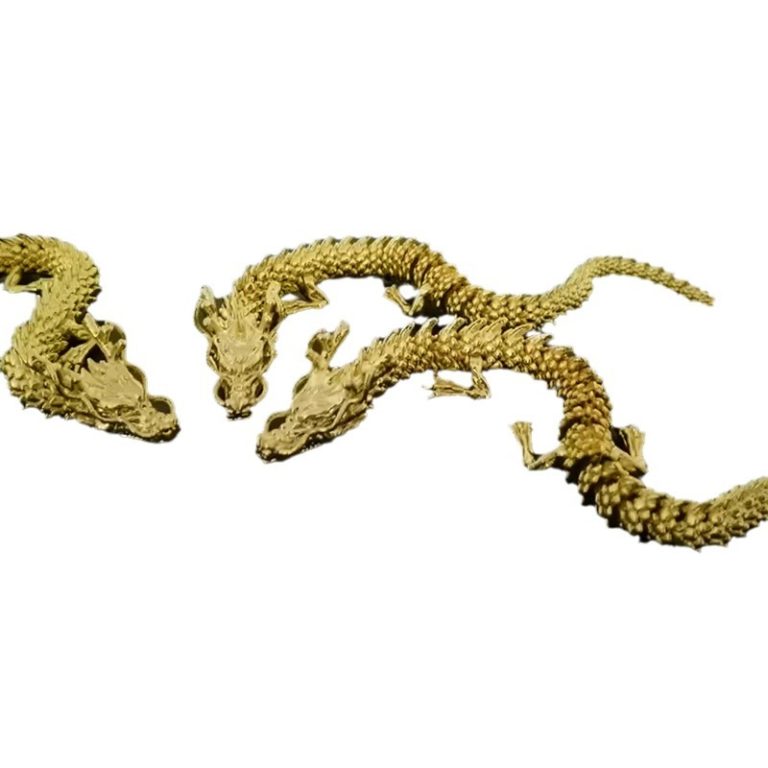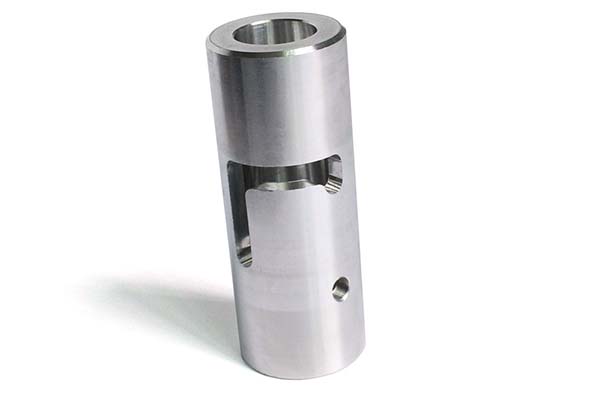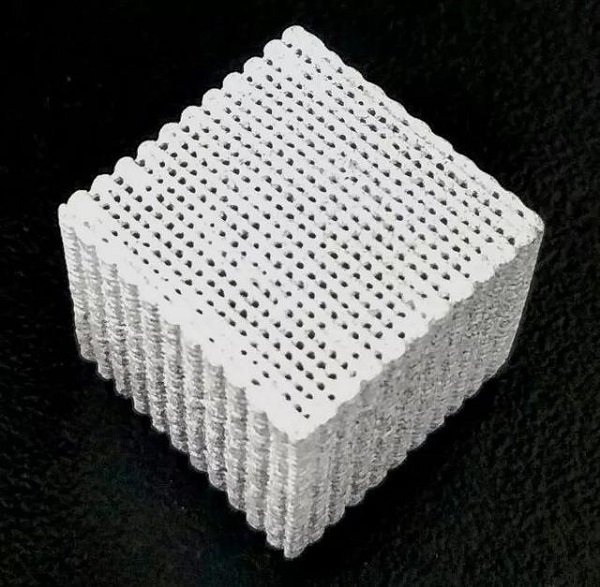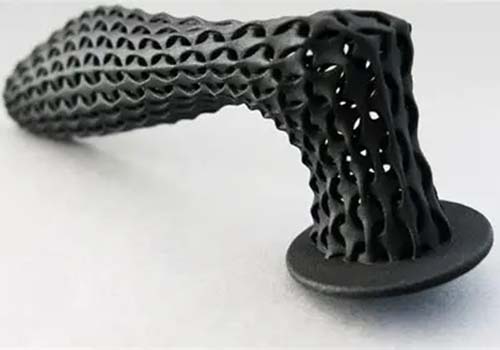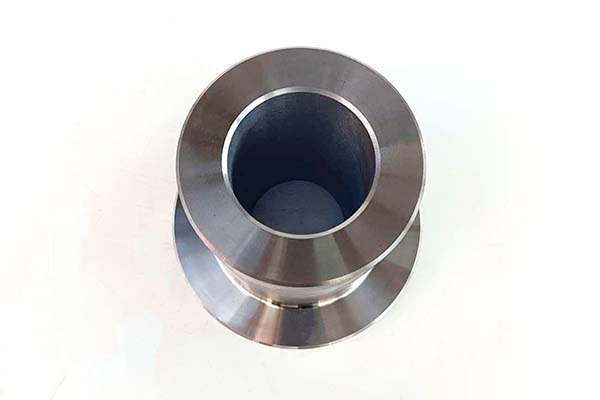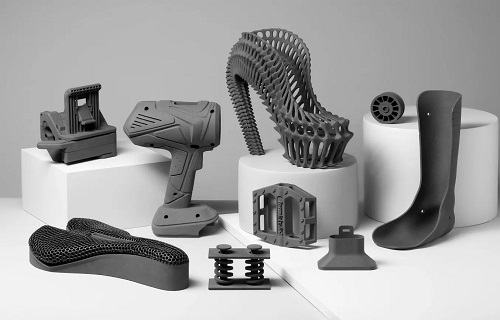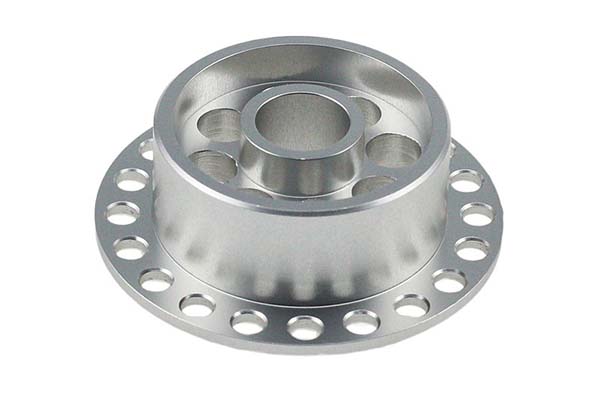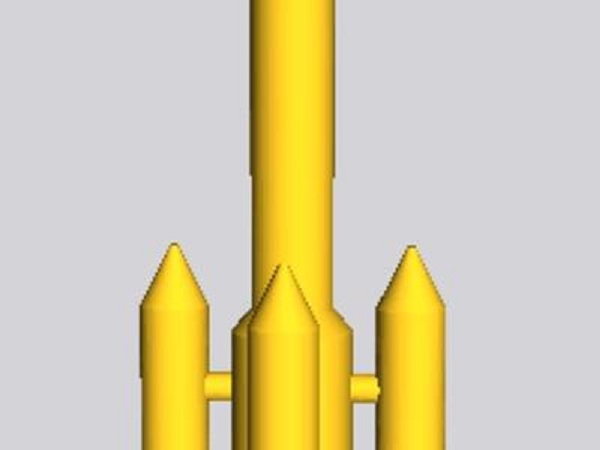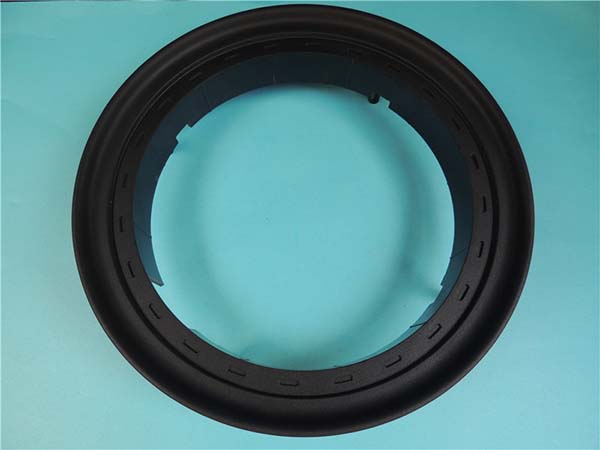yigu: The allure of 3D dragon prints is undeniable. Dragons, with their mythical charm, have fascinated humanity for centuries. Now, with 3D printing technology, enthusiasts can bring these majestic creatures to life in physical form. However, the journey from a digital dragon concept to a flawless 3D print is filled with potential pitfalls. Many users struggle with choosing the right 3D printing technology, grappling with complex dragon design and modeling, selecting appropriate materials, and achieving a professional post - processing finish. In this comprehensive guide, we will address these pain points and provide in - depth knowledge to help you create stunning 3D dragon prints.
3D Printing Technology: The Foundation of Your Dragon Print
Types of 3D Printers
There are several types of 3D printers, each with its own unique characteristics. Fused Deposition Modeling (FDM) printers are among the most popular and affordable. They work by extruding a molten thermoplastic filament, such as PLA or ABS, layer by layer. For example, a typical FDM printer like the Creality Ender series can achieve a layer height as low as 0.1 mm, which affects the overall resolution of the print.
Stereolithography (SLA) printers use a different approach. They cure a liquid photopolymer resin using a UV laser, creating highly detailed models with smooth surfaces. SLA printers, such as the Anycubic Photon series, can produce models with much finer details compared to FDM printers, often with layer heights of 0.05 mm or even less.
Digital Light Processing (DLP) printers are similar to SLA but use a digital light projector to cure the resin all at once for each layer, resulting in faster print times.
Printing Process and Layer - by - Layer Construction
All 3D printers build objects layer by layer. In an FDM printer, the filament is melted in the nozzle and deposited on the build platform. As the layers stack up, the dragon gradually takes shape. The printing speed of an FDM printer can range from 30 - 200 mm/s, depending on the model and settings. However, faster speeds may sometimes result in lower quality prints, with issues like poor layer adhesion.
In SLA and DLP printers, the resin is cured layer by layer. The curing process is highly precise, allowing for the creation of intricate dragon features such as fine scales or delicate wings. But, these printers may require more careful handling of the resin, which can be messy and may have a limited shelf life.
Resolution and Printing Speed
Resolution is a crucial factor in 3D printing. In FDM, a lower layer height means higher resolution but longer print times. For a detailed dragon model, you might need to sacrifice some speed for better resolution. For instance, printing a small dragon figurine with a 0.1 mm layer height on an FDM printer could take 10 - 15 hours, while increasing the layer height to 0.2 mm might reduce the time to 5 - 8 hours but result in a slightly less detailed print.
SLA and DLP printers generally offer higher resolutions out of the box. They can create smooth surfaces and detailed features more easily. However, their printing speeds can also vary. DLP printers, with their ability to cure an entire layer at once, are often faster than SLA printers in terms of layer - by - layer processing.
Slicing Software
Slicing software is essential for preparing your 3D model for printing. Programs like Cura (commonly used with FDM printers) and ChiTuBox (for SLA and DLP printers) take your 3D model and slice it into layers. They also allow you to adjust settings such as layer height, printing speed, and the type of support structures needed. For example, if your dragon model has overhanging parts, the slicing software can generate support structures to ensure a successful print. Different slicing software may have slightly different interfaces and capabilities, so it's important to choose one that suits your printer and your level of expertise.
Dragon Design & Modeling: Bringing Your Mythical Creature to Life
Understanding Dragon Anatomy
Before starting the design process, it's crucial to understand dragon anatomy. Dragons typically have a long, muscular body, powerful legs, large wings, and a distinct head with sharp teeth and horns. When creating a 3D model, you need to pay attention to the proportion of these body parts. For example, the wings should be large enough to support the dragon's body in a believable way. Studying references from mythology, movies, or games can help you accurately represent dragon anatomy in your design.
3D Modeling Software and CAD Design
There are several 3D modeling software options available. Blender is a popular open - source software that offers a wide range of tools for creating 3D models. It has a steep learning curve but provides extensive capabilities for sculpting, texturing, and rigging. For instance, you can use its sculpting tools to create the rough shape of the dragon and then refine it with more detailed brushes to add scales and other features.
Autodesk Maya is another powerful software, often used in the professional animation and gaming industries. It offers advanced modeling, animation, and rendering features. CAD (Computer - Aided Design) software like SolidWorks can also be used for more technical dragon designs, especially if you want to create a dragon with precise measurements, perhaps for an educational model or a functional prototype.
Sculpting Tools and Digital Sculpting
Digital sculpting is a key part of creating a detailed dragon model. In software like Blender, tools such as the "Grab," "Smooth," and "Inflate" brushes are used to shape the dragon's body. You can start with a basic primitive shape, like a cube or a sphere, and gradually sculpt it into the form of a dragon. For example, using the "Grab" brush, you can pull out the wings from the body, and the "Smooth" brush can be used to refine the surface and make it look more natural. The process of digital sculpting requires patience and practice to achieve the desired level of detail.
Texture Mapping
Texture mapping is what gives your dragon its unique look. You can create textures for the dragon's skin, scales, and other features. In Blender, you can use the UV mapping process to apply textures accurately. For example, you can create a scale texture in an external image editing software like Photoshop and then map it onto the dragon's body in Blender. The texture can include details such as color variations, bumps to simulate the feel of scales, and even patterns to make the dragon more distinct.
Scale and Proportion
Maintaining proper scale and proportion is vital for a realistic - looking dragon. If you're creating a dragon for a specific purpose, such as a tabletop game, you need to ensure that its size is appropriate for the game's scale. For example, if the game uses 28 - mm scale miniatures, your dragon model should be sized accordingly. In addition, the proportion of different body parts to each other should be consistent. A dragon with a head that's too large or wings that are too small in relation to its body will look unrealistic.
Dragon Print Applications: Where Your 3D Creations Can Shine
Decorative Dragon Figures
3D printed dragon figures make excellent decorative items. You can display them in your home, office, or even use them as part of a themed event decor. For example, a large, intricately designed dragon figure printed in a metallic - looking filament can be a stunning centerpiece for a fantasy - themed party. These decorative figures can be customized in terms of size, color, and level of detail to match your aesthetic preferences.
Dragon Toys
3D printed dragon toys are a great option for children and collectors alike. Articulated dragon toys, which have movable parts, can provide hours of playtime. You can use flexible filaments to create parts like wings or tails that can bend, adding to the playability of the toy. For collectors, highly detailed dragon toys that are accurately modeled after their favorite fictional dragons can be valuable additions to their collections.
Educational Models
In an educational setting, 3D printed dragon models can be used to teach various concepts. For example, in a biology class, a dragon model can be used to discuss anatomy, with students studying the structure of its wings, legs, and internal organs (if the model is designed to show such details). In a history or mythology class, the model can help students visualize the dragons from different cultures and their significance. Educational models can be designed to be simple and easy to understand for younger students or more complex and detailed for advanced learners.
Prototypes for Dragon - Themed Products
If you're an entrepreneur or a designer looking to create dragon - themed products, 3D printing can be used to create prototypes. For instance, if you're planning to make dragon - shaped jewelry, you can first 3D print a prototype to test the design, size, and wearability. This can save time and money compared to traditional manufacturing methods, as you can easily make adjustments to the 3D model and print a new prototype until you're satisfied with the design.
Customized Dragon Gifts
3D printed dragon gifts are unique and personalized. You can create a dragon model based on the recipient's interests, such as a dragon with their favorite color scheme or one that has a special symbol incorporated into its design. For example, if the recipient is a fan of a particular sports team, you can print a dragon with the team's colors or logo on its body. These customized gifts are sure to be cherished.
Display Models for Events
At events such as comic - cons, fantasy conventions, or art exhibitions, 3D printed dragon display models can attract a lot of attention. A large, well - printed and painted dragon model can be used to promote a product, a game, or an artist's work. It can serve as a focal point of a booth or an exhibition area, drawing people in and creating a memorable experience.
Materials for Dragon Printing: Choosing the Right Substance
PLA (Polylactic Acid)
PLA is a popular and widely available filament for FDM 3D printers. It is biodegradable, made from renewable resources such as corn starch. PLA is relatively easy to print with, as it has a low melting point (around 180 - 220°C depending on the brand). It comes in a wide range of colors, making it suitable for creating colorful dragon models. However, it is not as strong as some other materials and may be more prone to breaking under stress.
ABS (Acrylonitrile Butadiene Styrene)
ABS is another common thermoplastic filament. It is stronger and more heat - resistant than PLA, with a melting point around 220 - 250°C. This makes it a better choice for functional dragon models or parts that need to withstand some wear and tear. However, printing with ABS can be more challenging as it requires a heated build platform to prevent warping, and it has a strong odor during the printing process.
Resin
Resin is used in SLA and DLP 3D printers. There are different types of resin available, including standard resin, flexible resin, and high - temperature resin. Standard resin is suitable for most general - purpose dragon printing, offering good detail and a smooth finish. Flexible resin can be used to create parts of the dragon that need to bend, such as wings or tails. High - temperature resin is useful if your dragon model will be exposed to heat, although it may be more expensive and have specific curing requirements.
Flexible Filaments
Flexible filaments, such as TPU (Thermoplastic Polyurethane), are great for creating parts of the dragon that require flexibility. For example, you can use TPU to print the membranes of the dragon's wings, allowing them to move and bend more realistically. Flexible filaments can be a bit more difficult to print with as they require specific printer settings, such as lower extrusion temperatures and slower print speeds, to ensure proper adhesion and extrusion.
Metal - Infused Filaments
Metal - infused filaments, like bronze - filled or copper - filled PLA, can give your dragon a metallic look. These filaments contain small particles of metal, which make the printed object appear more like a metal sculpture. They are a great option for creating decorative dragon models that have a more luxurious or antique feel. However, they can be more expensive than regular filaments and may require some post - processing, such as polishing, to enhance the metallic appearance.
Support Materials
Support materials are often needed during the 3D printing process, especially for models with overhanging parts. In FDM printing, materials like PVA (Polyvinyl Alcohol) are commonly used as support materials. PVA is water - soluble, which means it can be easily removed by soaking the printed object in water after printing. In resin - based printing, the resin itself can be used as support, and it is typically removed by carefully breaking or washing it away. The choice of support material depends on the type of printer, the material being printed, and the complexity of the dragon model.
Material Properties
When choosing a material for your dragon print, it's important to consider its properties. Strength, flexibility, heat - resistance, and printability are all factors to take into account. For a decorative dragon figure that won't be subjected to much handling, a colorful PLA filament may be sufficient. But if you're creating a dragon toy that will be played with vigorously, a stronger material like ABS or a flexible filament might be a better choice. Understanding the properties of different materials will help you make the right decision for your specific 3D dragon printing project.
Post - Processing of Dragon Prints: The Final Touches
Sanding
Sanding is an important post - processing step, especially for FDM prints. After printing, the surface of the dragon may have layer lines or rough spots. Using sandpaper of different grits, starting from a coarse grit (such as 80 - 120) to remove larger imperfections and then moving to a finer grit (200 - 600) for a smoother finish, you can gradually refine the surface. Sanding can also be used to smooth out any rough edges on parts that were printed with support structures.
Painting
Painting your 3D printed dragon can bring it to life. You can use acrylic paints, which are widely available and easy to work with. First, it's a good idea to prime the surface of the dragon with a primer paint. This helps the paint adhere better and provides a smooth base. Then, you can apply multiple layers of paint to achieve the desired color and effect. For example, you can use dry - brushing techniques to add highlights to the scales or use washes to create shadows and depth. You can also use spray paints for a more even finish, especially for larger areas.
Priming
Priming is crucial for both FDM and resin - printed dragon models. A good primer helps to seal the surface, making it easier for the paint to stick and also improving the durability of the print. There are different types of primers available, such as plastic primers for FDM prints and resin - specific primers for SLA and DLP prints. Applying a thin, even coat of primer and allowing it to dry completely before painting is essential for a professional - looking finish.
Assembly
If your dragon model was printed in multiple parts, assembly is the next step. For example, a large dragon may be printed in sections to fit on the printer bed. You can use glue, such as super glue or epoxy, to join the parts together. Make sure to align the parts carefully before gluing to ensure a proper fit. Some models may also require the use of small screws or nuts and bolts for a more secure assembly, especially if the parts need to be movable.
Glazing
Glazing can be used to add a shiny, protective finish to your dragon. Clear acrylic glazes or varnishes can be applied after painting. They not only give the dragon a more polished look but also help to protect the paint from scratches and fading. You can apply the glaze with a brush or use a spray - on glaze for a more even application.
Surface Finishing and Detail Enhancement
In addition to sanding, painting, and glazing, there are other techniques for surface finishing and detail enhancement. You can use small tools like hobby knives to clean up any remaining support material marks or to add more detailed features. For example, you can use a knife to carefully carve out the shape of the dragon's eyes or to make the scales more distinct. You can also use decals or stickers to add additional details, such as a dragon's emblem or unique markings.
Yigu Technology, as a plastic metal parts custom manufacturing Supplier, believes that 3D printing technology offers great potential for creating dragon - themed products. We see the importance of accurate design and high - quality materials in achieving excellent results. Our experience in custom manufacturing can be applied to assist in optimizing the 3D printing process for dragon prints. For example, we can provide advice on material selection based on the specific requirements of the dragon model, whether it's for durability, aesthetics, or functionality. We also understand the significance of post - processing in enhancing the final product, and our expertise can contribute to achieving a more refined finish.
FAQ
- What is the best 3D printer for printing dragon models?
- The best 3D printer depends on your needs. For beginners on a budget, an FDM printer like the Creality Ender series can be a great choice as it's affordable and easy to use. If you want highly detailed prints with smooth surfaces, an SLA or DLP printer such as the Anycubic Photon series might be more suitable.
- How can I make my 3D printed dragon look more realistic?
- Pay attention to dragon anatomy during the design phase. Use high - resolution printing settings and appropriate materials. Post - processing is also crucial. Sanding to remove layer lines, painting with realistic colors and techniques like dry - brushing and washes, and adding details with tools or decals can all make your dragon look more realistic.
- Can I use different materials for different parts of the dragon?
- Yes, you can. For example, you can use a rigid material like PLA or ABS for the body of the dragon and a flexible filament like TPU for the wings to make them more movable. In multi - material 3D printers, you can even print different materials simultaneously, but this requires more advanced printer models and setup.
